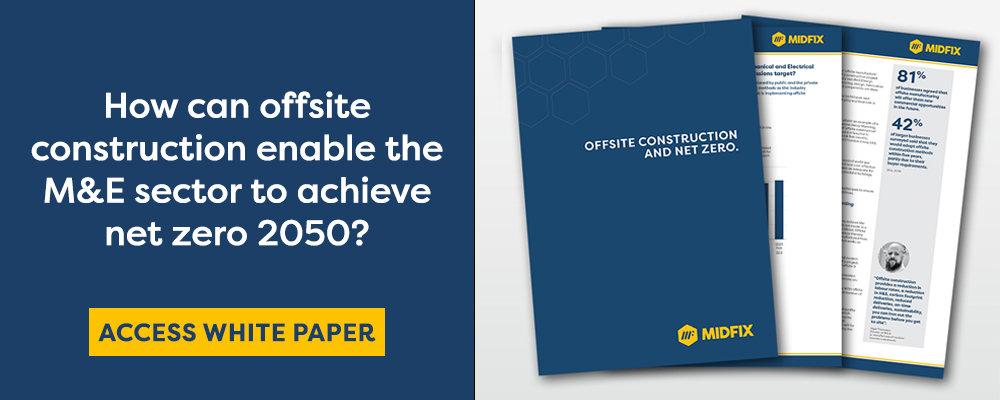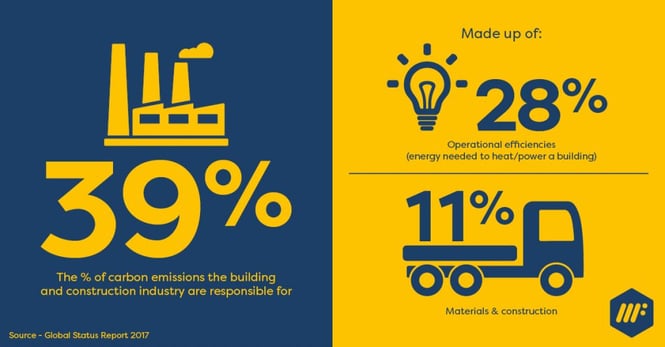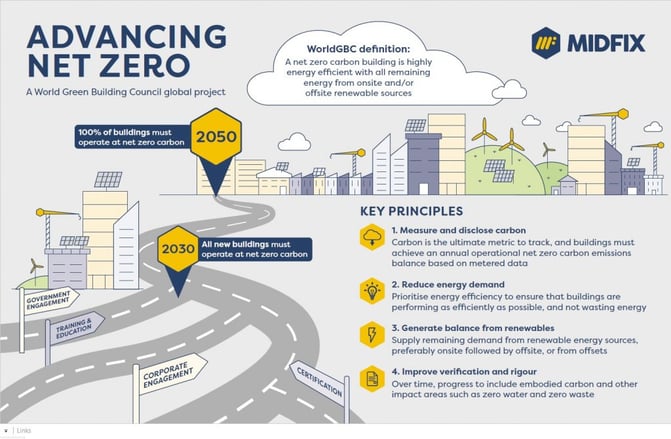How can you decarbonise an M&E installation through MMC and off-site construction? [free net zero white paper]
It can be difficult for you to keep sustainability at the heart of your M&E installation. The pressure to keep within carbon emissions targets has led to M&E contractors looking outside of traditional construction methods and onto modern approaches such as off-site construction.
The benefits of moving to off-site construction is shown through modern methods of construction, where teams of designers and engineers can manufacture secondary modular supports at scale within a factory away from the live project with minimal waste and resources.
Continuing to rely on traditional secondary supports increases the use of finite resources and negates any sustainable efforts you may have made across the project.
The article below outlines the principles of net zero and how off-site construction and MMC can help you decarbonise your next M&E installation.
The construction sector and carbon emissions
Did you know that the building and construction industry is responsible for 39% of all carbon emissions released into the atmosphere. Operational efficiencies make up 28% of the total (energy needed to heat/power a building) and the remaining 11% is embedded carbon (defined as manufacturing, transportation, and construction phases of a building before it goes into use). (Global Status Report, 2017).
What is Net Zero?
The UK Green Building Council defines net zero as “when the amount of carbon emissions associated with a building’s embodied and operational impacts over the life of the building, including its disposal, are zero or negative”1
Is time running out?
By 2030 all new buildings must operate at net zero carbon and by 2050 every building in the UK should be operating at net zero carbon. Since the legislation was passed in 2019, principal contractors have prioritised carbon-friendly strategies for new builds.
An example of this can be seen in the UK’s largest diagnostic COVID testing facility construction project, led by a multi-disciplinary collaboration of Mace and Balfour Beatty. The 225,000 square foot laboratory is being built within an existing warehouse building to reduce carbon emissions during its delivery (Clark 2021).
What are the key principles of Net Zero?
Measure and disclose carbon.Carbon is the ultimate metric to track, and buildings must achieve an annual operational net zero carbon emissions balance based on metered data.
Reduce energy demand.Prioritise energy efficiency to ensure that buildings are performing as efficiently as possible, and not wasting energy.
Generate balance from renewables.Supply remaining demand from renewable energy sources, preferably onsite followed by offsite or form offsets.
Improve verification and rigour.Over time, progress to include embodied carbon and other impact areas such as zero water and zero waste.
How can off-site construction and modular M&E supports help contractors adhere to these principles?
Often known as prefabrication or off-site manufacture, ‘off-site construction’ refers to the completion of elements or components of a construction project at a different location to where they will be permanently installed (Design Buildings, 2020).
Off-site construction can greatly aid the fourth principal – improving verification and rigour through embedded carbon. If the methods of offsite construction are practiced, then the carbon emissions from the manufacturing, transportation and construction phases of a building can be reduced.
Transport
Early engagement with off-site construction specialists is the key to unlocking the environmental transport benefits. This means that solutions are optimised as early as the design stage of a concept and therefore reducing weight, materials, and volume. All these factors reduce the amount of transport required to get a completed solution onsite. Comparatively, when solutions are fabricated onsite, components are often sourced from multiple sources for price reasons and therefore greatly increase the amount of transport required to achieve the end solution.
Manufacturing stage
Whilst off-site construction techniques obviously remove the need for hot works. Off-site specialists often take this a step further by taking advantage of modular systems that do not require hot works at all. In addition to this, cutting and drilling is reduced and the amount of waste produced is reduced.
Secondary modular steelwork supports
With the increasing understanding of modern methods of construction, supports for M&E services are now becoming modular. These supports can be easily assembled with minimal tools; without the need for hot works, removing waste as they are cut to size, and deliveries to and from site are reduced because supports can be altered at source.
Space onsite
As off-site construction often takes place in a factory setting, there is often less requirement for cutting and assembly stations on-site. This reduces the need the labour requirements and thus decreasing carbon emissions.
Off-site construction techniques have been embraced by many of the UK’s leading tier 1 contractors such as Kier Group, Mace, and Balfour Beatty.
The white paper below provides an in-depth review of the off-site construction methodology.

The whitepaper outlines:
- The growth of the construction industry and the M&E sector.
- The history, benefits, barriers, and potential solutions for offsite construction.
- How offsite construction can help the construction industry and the M&E sector meet the net zero target.
REFERENCES
- Clark, T (2021) ‘Mace and Balfour picked to deliver COVID testing facility’ Source: Construction News [https://www.constructionnews.co.uk/buildings/contracts/mace-and-balfour-picked-to-deliver-covid-testing-facility-14-07-2021/]
- UKGBC (2019) Net Zero Carbon Buildings: A Framework Definition. UK Green Building Council, London. 25pp. [https://www.ukgbc.org/ukgbc-work/net-zero-carbon-buildings-a-framework-definition/]
- Proud Green Buildings (2018) 'Infographic Advancing net zero' Source: [https://www.proudgreenbuilding.com/news/infographic-advancing-net-zero]
FURTHER READING
KIER GROUP, (2020) ‘ The Choice Factory – integrator of manufactured solutions’ Source: [https://www.kier.co.uk/media/4717/the-choice-factory-volume-2.pdf]



